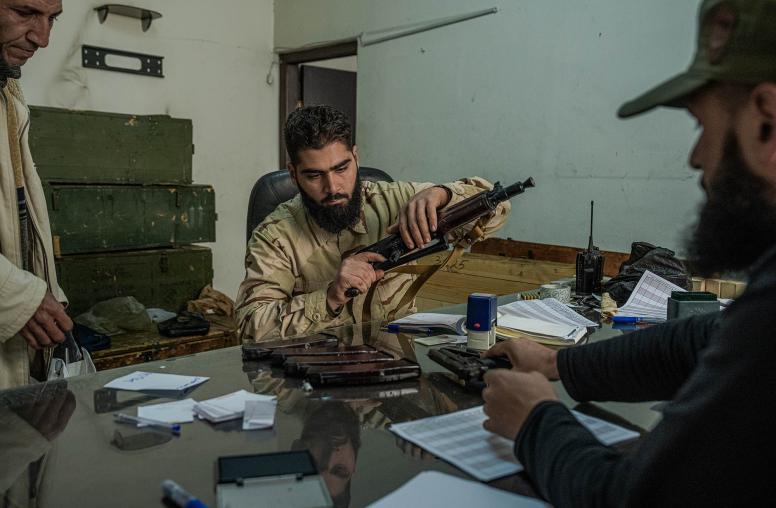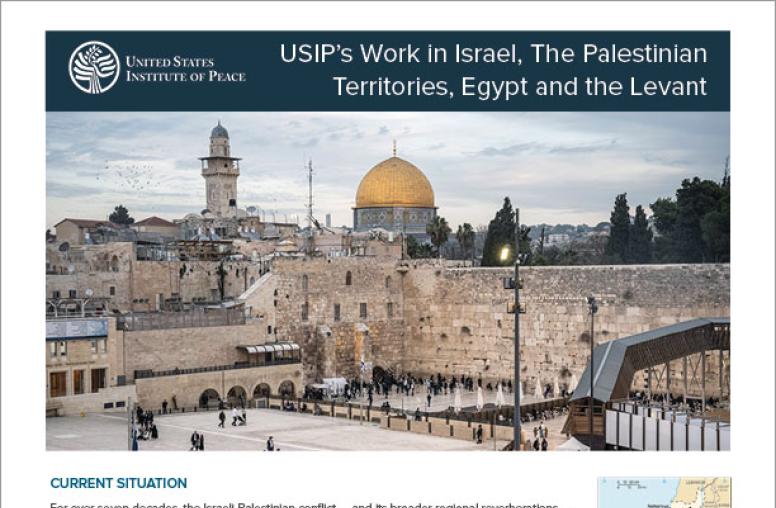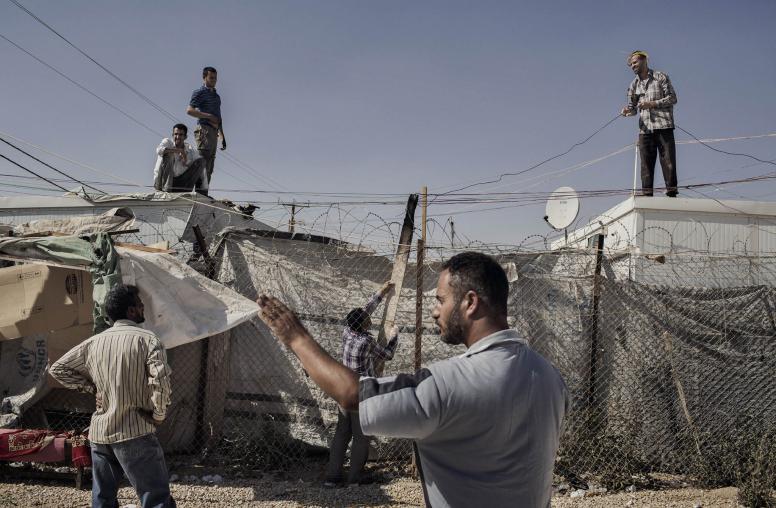What IS the U.S. Interest in Syria?
With more than 80,000 Syrians killed and millions forced from their homes by the fighting, debate over the benefits vs. risks of getting more involved continues to forestall decisive action to more vigorously back the opposition and rebel fighters. USIP’s Rachel Brandenburg examines the considerations at play.

As the war in Syria grinds on into its third year, support among the American public for more robust U.S. action to back the opposition and rebel fighters is stalled -- yet the risks are growing. Administration and congressional debate over legislation and the prospect of imposing a no-fly zone centers again on the question of what is the real U.S. interest in getting more involved in a conflict that seems to have few obvious openings for resolution.
On May 7, President Barack Obama reiterated that the U.S. has “both a moral obligation and a national security interest in, A, ending the slaughter in Syria,” and in “ensuring that we’ve got a stable Syria that is representative of all the Syrian people, and is not creating chaos for its neighbors.”
But a New York Times/CBS opinion poll showed that almost two-thirds of Americans say the U.S. has no responsibility to address the fighting in Syria. USIP will host a panel of experts on May 29 on “A Syrian No-Fly Zone: Options and Constraints.”
The Syrian people have been fighting to oust Bashar al-Assad since March 2011. The United Nations estimates that more than 80,000 Syrians have been killed and says more than 1.4 million have registered as refugees, with actual numbers of Syrian refugees estimated to be far higher. An additional five million Syrians have been displaced from their homes within the country.
Each of Syria’s neighbors has seen the conflict spilling over its borders. Violence has extended into Iraq, Lebanon, Jordan, and Israel and Syrian refugees have fled to Jordan, Lebanon, and Turkey, all compounding a growing risk of instability in an already-fragile region. The United States continues to provide humanitarian assistance and non-lethal support to the opposition, while policymakers and pundits debate the merits of lethal support or different forms of military intervention.
Chaos and fragmentation within Syria are creating wider openings for interests hostile to the U.S. such as al-Qaida and Iran to wield influence and exacerbate the conflict within Syria and beyond.
Israel also remains under threat of cross-border attacks, in particular as Hezbollah plays a greater role in the fighting. Israel has proven it is willing to protect itself unilaterally, as evidenced by a series of targeted airstrikes earlier in May. But Israeli officials remain hesitant to become further involved militarily, realizing that the outcomes are highly uncertain.
“Sometimes there is a tension between two things,” Giora Eiland, a former Israeli national security advisor, told The New York Times on May 23, “First is the situation that might affect your important interest, and second is your inability to something in order to change it. Sometimes the only thing you can do is do nothing.”
The United States, too, continues to weigh the considerations at play: which tools it has at its disposal to yield which outcomes; what are the chances that the outcomes desired will be attained even with the appropriate tools; and what costs, risks, and benefits are there for any given action.
The U.S. is providing more than $500 million in humanitarian assistance, and has committed to an additional $250 million in transition support to the Syrian Opposition Coalition and the opposition’s Supreme Military Council. American leadership is engaged in round-the-clock diplomacy aimed at a political settlement. As Dennis Ross, a longtime Middle East expert who has served in multiple administrations and is now at the Washington Institute for Near East Policy, noted in The New Republic, “The problem is not that we lack options in Syria, but that we don’t know whether any of our options can produce a minimally tolerable outcome.”
On May 21, the Senate Foreign Relations Committee voted 15-3 to back the Syria Transition Support Act, bipartisan legislation introduced by panel Chairman Senator Robert Menendez (D-NJ), and Ranking Member Senator Bob Corker (R-TN). The legislation includes authorization to provide limited lethal and non-lethal support to pre-approved Syrian groups. It also authorizes additional funds to support the civilian opposition in developing institutions, backs the current humanitarian assistance effort, and imposes further sanctions on arms transfers and oil sales to Bashar al-Assad.
The legislation also amends the Syria Accountability Act that facilitates the removal of sanctions once a transitional government is in place and able to meet certain criteria.
“The time to turn the tide against Assad is now,” Senator Menendez said, “The United States must play a role in tipping the scales toward opposition groups and working to build a free and democratic Syria.”
President Obama spelled out the U.S. interest in the region two years ago in the early months of the Arab uprisings. In a May 19, 2011, speech focused on transitions across the Middle East and North Africa, President Obama said, “There must be no doubt that the United States of America welcomes change that advances self-determination and opportunity. Yet, there will be perils that accompany this moment of promise. But after decades of accepting the world as it is in the region, we have a chance to pursue the world as it should be.”
Nonetheless, as the Syrian conflict continues, the humanitarian, political, and security crises escalate within and beyond Syrian borders. The credibility of the United States to act on promises made and threats levied -- and to meet expectations raised by such rhetoric – remains at stake.
The risks are high and the perils plentiful, but as President Obama said in that 2011 speech, “There’s no straight line to progress, and hardship always accompanies a season of hope.”
“The United States of America was founded on the belief that people should govern themselves,” he said. “And now, we cannot hesitate to stand squarely on the side of those who are reaching for their rights, knowing that their success will bring about a world that is peaceful, more stable, and more just.”
In the case of Syria, the question remains how to most effectively and expeditiously help the Syrian people achieve these principles, for the sake not only of Syrians and their neighbors, but for the sake of the U.S. national interest.
Rachel Brandenburg is a USIP Program Officer for Middle East Initiatives who formerly worked in the State Department’s Office of Middle East Transitions.


